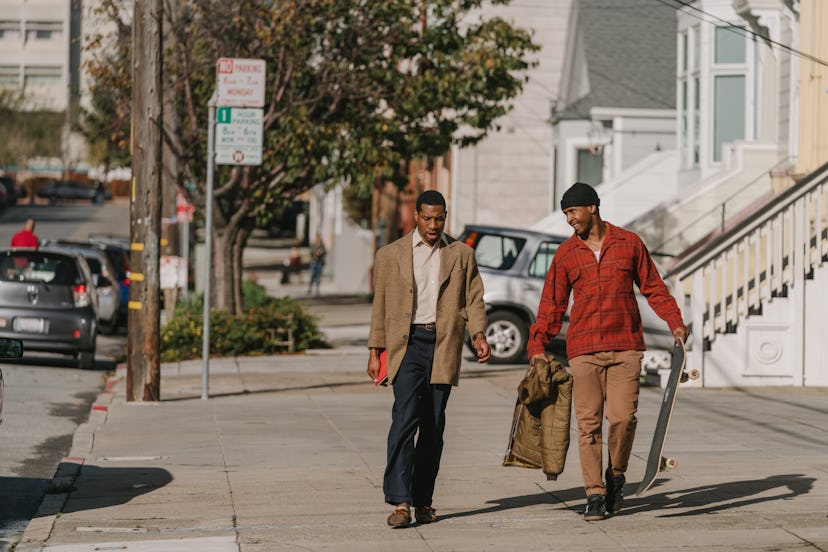Can the Best Black Film at Sundance Really Be Made by White Men?

When the producer Carol Ann Shine came to Sundance in the early aughts for a proto-Pose film called Punks, she said white onlookers would stare at her black cast and ask where they were from. “They’re from Louisiana and Mississippi!” she told me in a recent conversation. “As we were walking around, I realized how white Sundance was. It wasn’t just the snow. It was the content, it was the people who were represented, it was everyone that was here.”
That experience moved her (and Brickson Diamond) to found Blackhouse, a hub for black culture and networking at Sundance. In its 12th year, the organization just announced a new IFP-Blackhouse Multicultural Producers Lab. Blackhouse, along with the Macro Lodge (started two years ago by producers and financiers Charles and Stacey King) and Sundance’s new Talent Forum, which launched this year with a keynote conversation between Black Panther director Ryan Coogler and journalist Jenna Wortham, have all helped make Sundance a center for nonwhite filmmaking. The festival also made an effort this year to assure that 63 percent of press attending this year were from underrepresented groups, as announced by executive director Keri Putnam, creating a festival environment in which black and brown faces were truly everywhere.
Because of this progress and longtime commitment, I assumed when I saw what may be the most critically adored film at Sundance, The Last Black Man in San Francisco, that it was directed by…a black man. The film is about a skateboarding dude, Jimmie Fails (played by Jimmie Fails, and based on his autobiography) who can no longer afford to live in the city he grew up in. He is a third-generation San Franciscan, though decades ago his family lost the house his grandfather had raised his aunt and father in. Jimmy designates himself as caretaker for this old Victorian, against the wishes of the home’s new owners. His dreams and delusions are contrasted with the reality of his history of homelessness. When we are introduced to Jimmy and his best friend, Montgomery, Jimmy is crashing on Montgomery’s floor in the home of his blind grandfather (played by Danny Glover).
The last 10 minutes of the film, about the fallout after Montgomery, a playwright, confronts Jimmy’s dreamworld, is lovely and ambiguous. So it’s a shame that the 110 minutes preceding it was not as taut. In its best moments, the film is gorgeous, with interesting use of focus, color, and movement as the two friends travel and work throughout the city. Some of the film’s strongest moments convey meaning simply through furniture. But at its worst, the movie is like a flabby Wes Anderson facsimile: wide frames showing quirky content (even ripping off the format of Anderson’s play scenes directly), only with less wit, a slower pace, even fewer interesting women, and generous use of the word “nigga.”
But maybe that was the point I conjectured—that the Andersonian style doesn’t suit a black story. After all, for years black indie filmmakers had mostly white models, with black film students occupying those styles like occupying a house that wasn’t ours and that we weren’t wanted in. So when I discovered the director, Joe Talbot, and co-writers of the screenplay are white, the awkward style that felt stuck on and crooked (particularly about black masculinity) made more sense and required less mental justification. But was the best black film at Sundance really made by white men? That feels like backtracking to the Sundance of a few years ago, when Beasts of the Southern Wild was the hit of the festival. I thought film culture had progressed since, in not only new opportunities for black filmmakers but the realization that white filmmakers can tell their own stories without embarrassment or the feeling that to tell an indie story well they need to capture the backgrounds of those who seem more colorful or have struggled more. (Joanna Hogg’s The Souvenir was an example of a film by a white director unafraid of honestly exploring privilege.)
There were plenty of black directors with strong work at Sundance. One of the best was a 20-minute genre film called Suicide by Sunlight, by Nikyatu Jusu. The story of Valentina, a black nurse/vampire who is estranged from her own children because of her vampiric curse and need for blood, was devastating and despondent with a mastery of emotional tone. The film also accurately mirrored the desperate hunger I felt as a viewer, after a day of too many films (including The Last Black Man in San Francisco) directed by men in which the women roles felt lacking. Another film with mastery of tone was Clemency, a feature written and directed by Chinonye Chukwu. Alfre Woodard shines in the film as the capable warden of a prison with an active death row who is going through a moral crisis. Chukwu presents every scene with the subtle control of a classic-era studio filmmaker. This is a drama for adults, with a clear anti-capital-punishment message but also deft emotional delivery. The audience reaction was so strong that at crucial scenes my body felt physically crushed in a heap. Chukwu and Hogg were clearly the directors at Sundance with the best mastery of form. And like the director who wore that title last year (Debra Granik for Leave No Trace), they happen to be women.